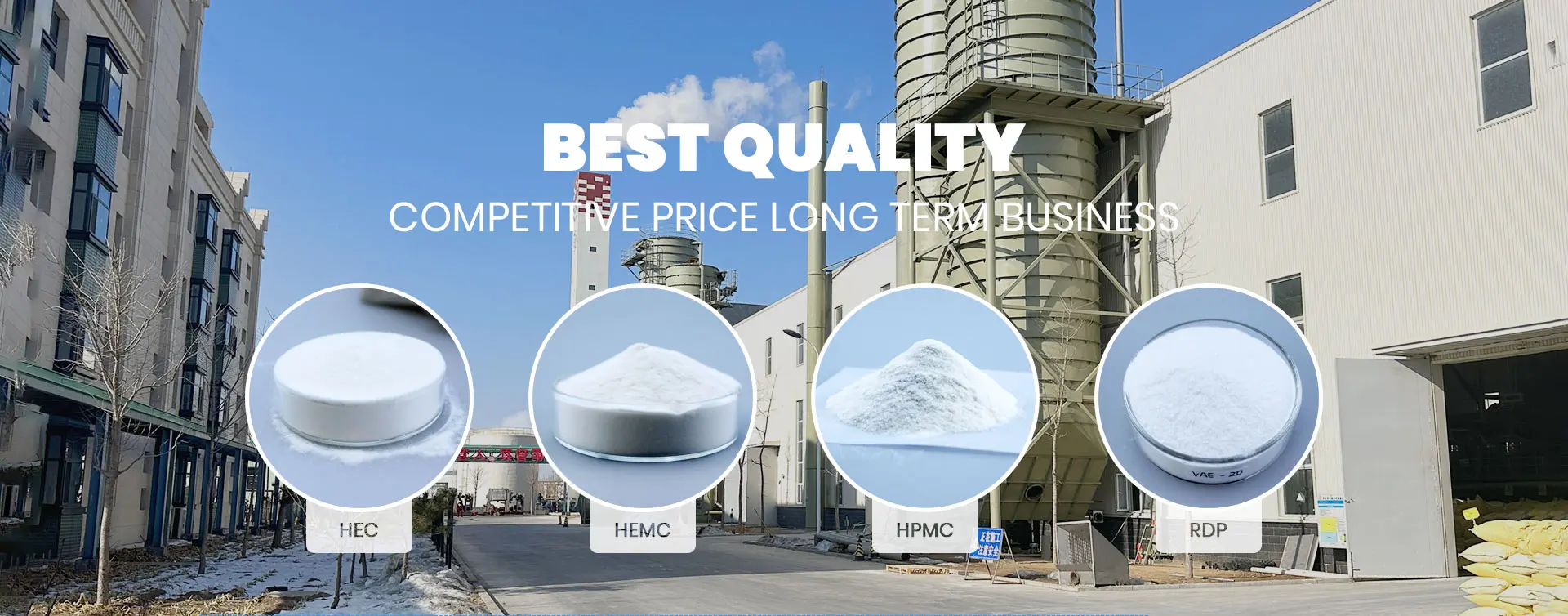
Out . 10, 2024 12:11 Back to list
hpmc
Understanding HPMC A Versatile Polymer for Modern Applications
Hydroxypropyl Methylcellulose (HPMC) is a semi-synthetic, non-ionic polymer derived from cellulose, one of the most abundant natural polymers on earth. Its unique properties and versatility have made it an essential ingredient in various industries, including pharmaceuticals, food, cosmetics, and construction. This article explores the characteristics, applications, and benefits of HPMC in modern-day applications.
Composition and Properties of HPMC
HPMC is produced by chemically modifying cellulose through etherification, which introduces hydroxypropyl and methyl groups into the cellulose structure. This modification significantly enhances the solubility of cellulose in water and improves its ability to form gels and films. HPMC is typically available in a range of viscosity grades, which allows formulators to choose the appropriate type based on their specific needs.
Key properties of HPMC include
1. Solubility HPMC is soluble in cold water, forming a smooth, viscous solution. This property makes it ideal for various applications where heat-sensitive ingredients are present, as it can be used without the need for elevated temperatures.
2. Thickening and Binding HPMC serves as an effective thickening agent, providing body and viscosity to formulations. It also acts as a binding agent, enhancing product stability and performance.
3. Film Formation When dry, HPMC can form flexible films, making it useful in coatings for tablets and other pharmaceutical products. These films can control the release of active ingredients, improving drug delivery efficiency.
4. Stability HPMC exhibits excellent chemical stability and does not react with various ingredients, which extends the shelf life of the products in which it is used.
Applications of HPMC
1. Pharmaceuticals In the pharmaceutical industry, HPMC is widely used as a binder and coating agent in tablet formulations. Its ability to control the release of drugs makes it invaluable in developing sustained-release and controlled-release dosage forms. HPMC is also popular in the production of hydrogels and wound dressings due to its biocompatibility.
hpmc

2. Food Industry HPMC is utilized in food products as a thickening agent, emulsifier, and stabilizer. It helps improve texture and mouthfeel in low-fat or reduced-calorie food products. Additionally, it serves as a gluten substitute in gluten-free formulations, providing structure and moisture retention.
3. Cosmetics and Personal Care In the cosmetics industry, HPMC is used as a thickener and stabilizer in creams, lotions, and gels. Its ability to form a smooth, clear gel makes it an ideal ingredient in skincare products. Furthermore, it can help provide a pleasant sensory experience, enhancing the product's application and feel on the skin.
4. Construction HPMC is employed as a water-retaining agent and binder in cement-based products like mortar and tile adhesives. It improves workability and adhesion, which are critical for construction applications. The water retention properties ensure that the applied product remains workable for extended periods, leading to better application and finishing.
Benefits of Using HPMC
The benefits of incorporating HPMC into various formulations are substantial. Some of these advantages include
- Versatility HPMC is adaptable across multiple industries, making it an accessible choice for formulators seeking effective ingredients across diverse applications.
- Safety HPMC is generally recognized as safe (GRAS) for use in food and pharmaceutical products, making it a preferred option for health-conscious consumers.
- Cost-Effectiveness HPMC is economically viable, providing formulators with an effective solution without incurring significant costs, thus maintaining product affordability.
- Enhanced Performance HPMC can improve the performance of products by enhancing texture, stability, and shelf life, leading to increased consumer satisfaction.
Conclusion
Hydroxypropyl Methylcellulose is a remarkable polymer that plays a crucial role in various industries. Its unique properties make it a valuable ingredient in pharmaceuticals, food products, cosmetics, and construction materials. As innovation continues to drive new applications, HPMC stands out as a versatile and reliable choice for formulators aiming to create high-quality products that meet today’s consumer demands. With its safety profile and cost-effectiveness, HPMC is undoubtedly poised to maintain its significance in the future.
-
Unlocking the Benefits of HPMC Products: A Gateway to Versatile Applications
NewsAug.07,2025
-
Unleashing the Potential of HPMC Ashland: A Comprehensive Look
NewsAug.07,2025
-
Tile Bonding Cellulose: The Key to Superior Adhesion and Durability
NewsAug.07,2025
-
Hydroxypropyl Methylcellulose Powder: The Versatile Component in Modern Pharmaceuticals
NewsAug.07,2025
-
Hydroxyethyl Cellulose: The Versatile Solution for Various Industries
NewsAug.07,2025
-
Hydroxyethyl Cellulose (HEC): The Versatile Polymer for Various Applications
NewsAug.07,2025







